ICO HetaChain Overview
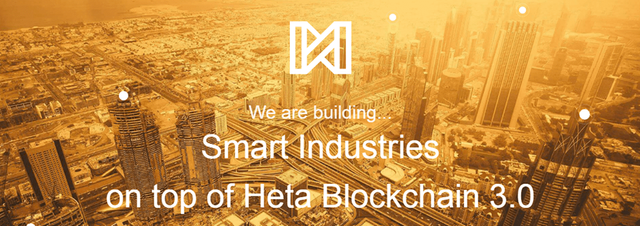
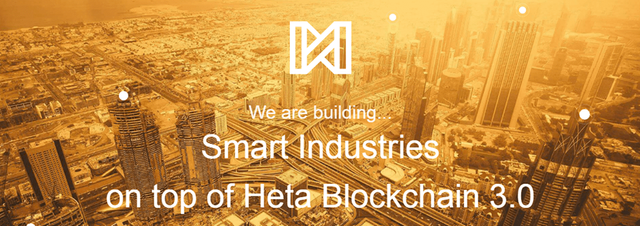
Blockchain is the basic technology that underlies most cryptocurrencies at the moment. This technology, which was released in 2008 with the advent of Bitcoin. It is gaining more and more popularity not so much due to the unprecedented growth of the cryptocurrency rate, but due to the tremendous value it carries. Here, first of all, we mean such advantages as complete security of making payments, solving the problem of trust in transactions, almost complete security of keeping your assets, independence from centralized management systems.
For more than a decade’s history of cryptocurrency, the blockchain has come a long way, there are many new projects that have improved and developed the original idea. In this regard, such projects as Ethereum, EOS, Stellar, Zilliqa and others can be particularly noted.
However, it should be noted that there are still quite a lot of white spots that do not allow this technology to fully enter our life. The solution to these problems should be the blockchain platform of the so-called third generation, one of whose representatives is the HetaChain project.
What is HetaChain?
HetaChain is the third generation third generation blockchain platform that allows virtually any business, government structure to create its decentralized applications for solving problems in the real world, characterized by stability of work, almost no cost to maintain the ecosystem, the lack of third-party impact, censorship.
Distinctive features of this platform are the possibility of multiple scaling to thousands of transactions per second, complete security, flexibility of the platform architecture, high speed of transactions without the risk of delay.
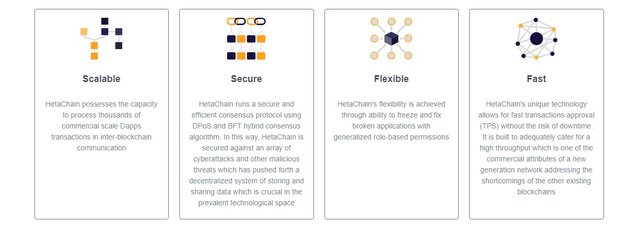
One of the distinguishing features of HetaChain is the multichain protocol that allows you to create private networks based on the platform, as well as to connect private networks to the main network via bridges.
Solvable problems
The developers identify three types of problems inherent in blockchain platforms at the current stage of development:
1 Poor performance, manifested in low transaction speed, poor scalability, and so on;
Security problems, especially relevant at the time of hard forks;
2 Great challenges for developers who have to learn new programming languages for developing decentralized applications.
From myself I can add a fairly low level of friendliness to ordinary users. At the moment, using a plastic card is much more convenient and easier than making a transaction in any of the operating blockchain networks.
Technological solutions
All technologies inside the platform are aimed at solving the current problems of blockchain platforms, which we talked about above.
Thus, the architecture of the platform makes it easy to use for both developers and ordinary users, and in general is a hybrid database inside and outside the chain, thereby increasing the system's ability to scale and speed transaction.
As for the consensus algorithm, the project team decided to develop a dPoS + BFT hybrid algorithm. This option is the best solution that uses the positive aspects of each of the algorithms and eliminates their disadvantages.
As for the transaction fee, it will be charged for each transfer and is needed to reward the producer unit, as well as users participating in the vote as a reward for supporting the network. The amount of commission will be calculated based on the complexity and size of the transaction, but will be maintained at a minimum level.
dPoS + BFT is used both in the main chain and in private chains.
The system provides, of course, the development of smart contracts. HetaChain will develop a number of smart-contraction templates that are ready for use in real business sectors and do not require additional development efforts.
As for the blocks, like any blockchain, HetaChain is a collection of blocks arranged one after the other. At the same time, each next block has a connection with the previous one, after the block has hit the circuit, the information in it cannot be changed. A block in HetaChain consists of three parts: a block header, block information, and block meta-information.
Team


Token Sale
Token name: HETA;
Price per token during sales: 1 HETA = 0.0167 USD
Soft-cap: 100,000,000 USD;
Hardcap: 520 million USD.
The distribution of tokens will occur as follows:
40% sent to tokensale;
30% - private sales;
15% for the team;
5% - bounty;
4% is required for product development;
and 3% is sent to advisors and partners.
The HETA token is the internal currency of the system and is required to pay transfer fees, as well as to participate in the validation process of private chains. In general, the token is required to access the HetaChain ecosystem.
Road Map
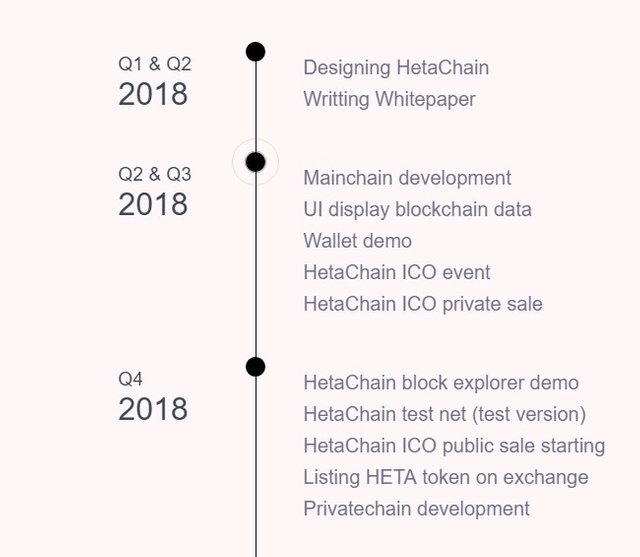
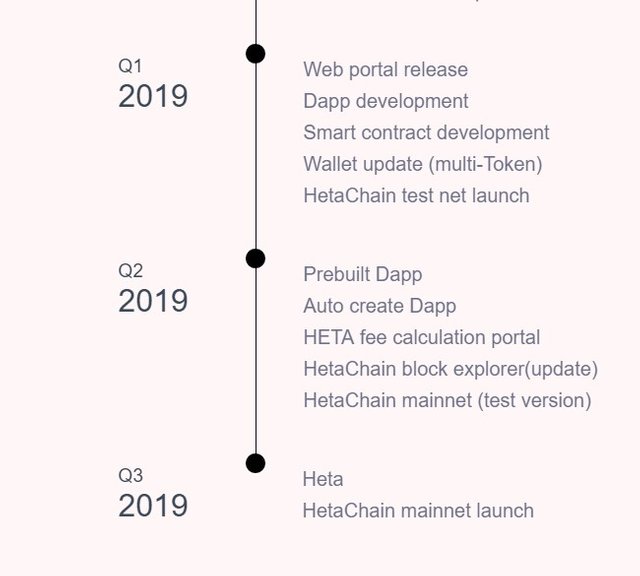
The main milestones can be considered the provision of a demo product at the end of 2018, the development of the platform will take place in 2019 and the release of the main network is scheduled for the third quarter of 2019.
The popularity of social networking project
The Telegram chat includes more than 39,000 people, the number of followers of a Twitter account is almost 32.2 thousand people, more than 2500 people have subscribed to Facebook.
Website: https://heta.org
WhitePaper: https://heta.org/docs/HetaChain_whitepaper_en-ver-1.0.pdf
Twitter: https://twitter.com/Heta_org
Facebook: https://www.facebook.com/hetachainofficial
Telegram: https://t.me/Hetachain_Community
My profil Bitcointalk: https://bitcointalk.org/index.php?action=profile;u=1090340
Source of shared Link

Congratulations @snowdawn! You received a personal award!
You can view your badges on your Steem Board and compare to others on the Steem Ranking